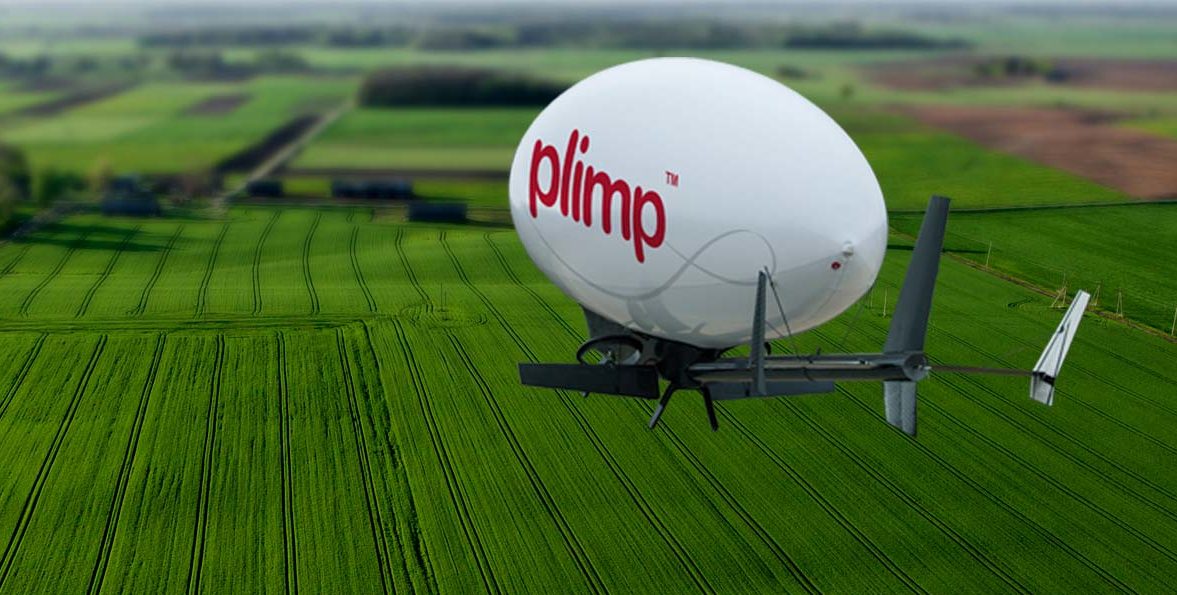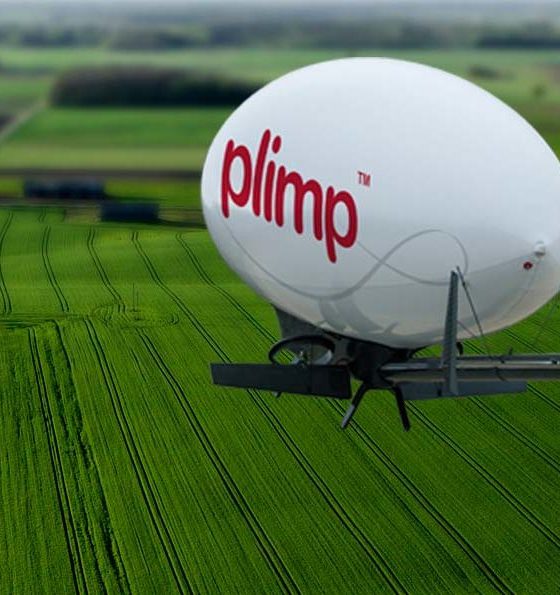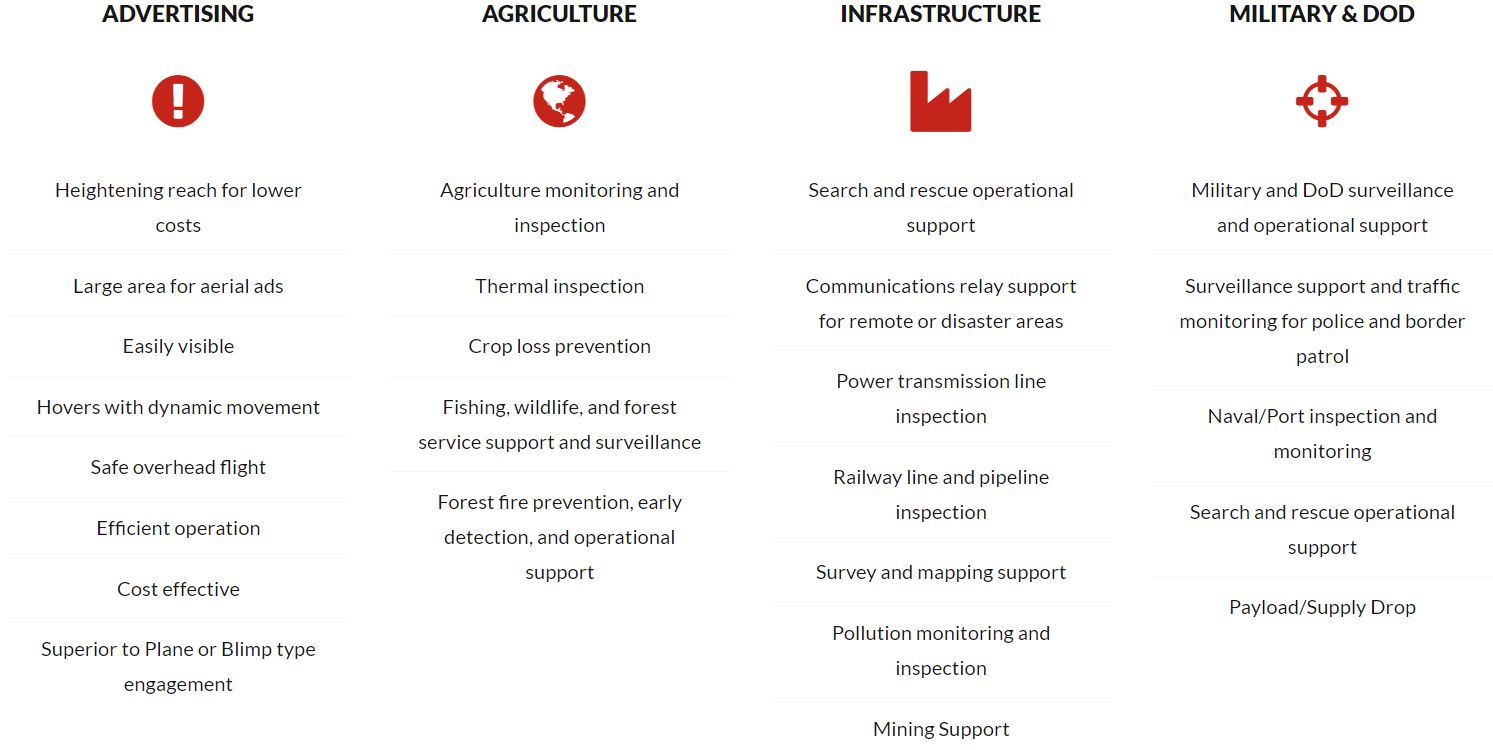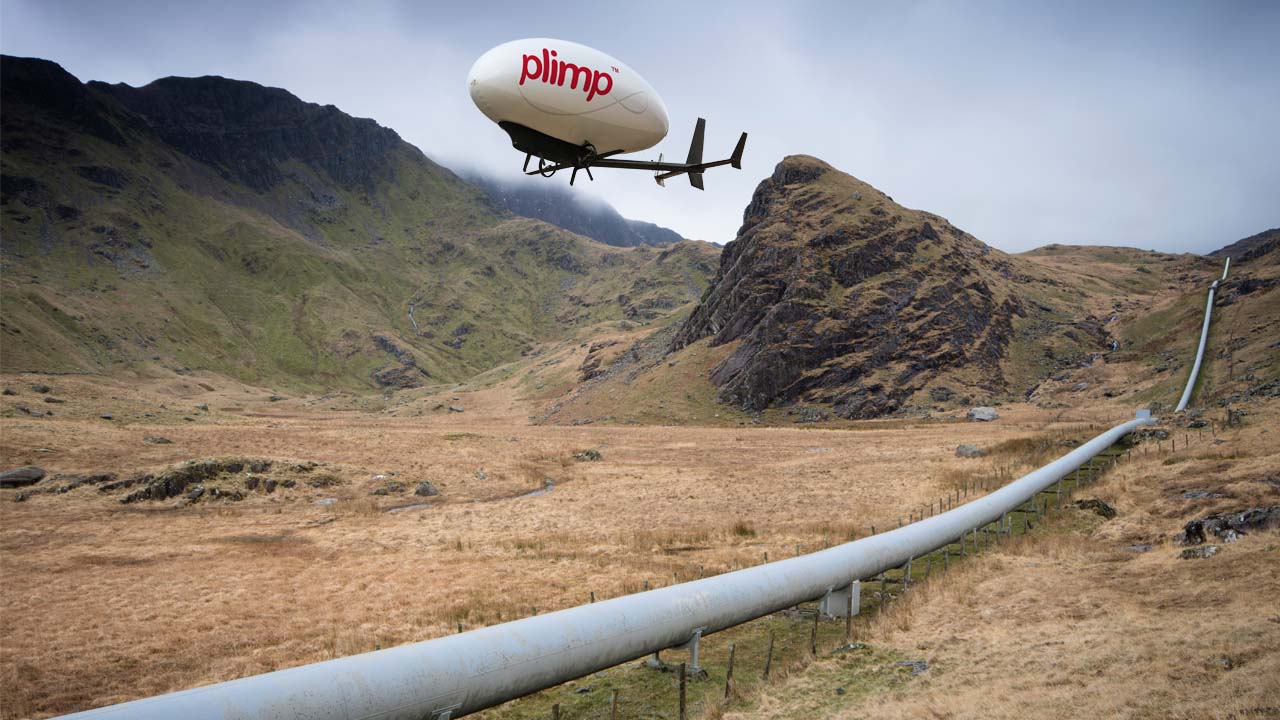

News
Hybrid airship startup builds ultra-safe, ‘plummet-proof’ aircraft with a catchy name
Egan Airships, Inc., a startup company based in Seattle, wants you to consider an aircraft mashup they’ve invented as an all-in-one aircraft solution, and they just may be on to something big. It’s called “Plimp,” and the name describes just what it is: a hybrid plane and blimp flying machine — drone and helicopter elements are also integrated. Using small wings for lift, electric propellers for thrust, and a strong helium-filled buoyant pouch, the Plimp is positioned to fill niche needs in communication and both civilian and military operations.
Thus far, a proof-of-concept Plimp drone was successfully built and demonstrated at the InterDrone 2018 Expo in Las Vegas in September. For commercial viability, Egan intends to use the craft for advertising as its initial market, but the long-term plan is to provide solutions for agriculture along with forest, wildlife, homeland security, and military operational support. The ability of the Plimp craft to achieve vertical takeoff and landing (VTOL) enables many of these capabilities that are not practical for other craft in the airship/dirigible category. As a VTOL craft, Plimps are easier to maneuver in small spaces and only need small clearings to land.

The airship manufacturer is currently seeking buyers to aid the development of the much larger version of its aircraft, the Model J, which will carry up to 10 people, 2 pilots and 8 passengers, specifically. The asking price is $4 million dollars plus overages, paid over the course of four years. Also, buyers must be vetted prior to purchase for an additional $1000 fee. Since the Plimp’s combination of rigid helium pouch and wings makes it a uniquely safe and plummet-proof aircraft, Egan is expecting to have a highly desired product that enables the discernibility it seeks in customer selection.

The Plimp drone can cruise for an hour at 30 mph with a 5 lb payload for 20 miles, although its total distance is restricted by drone visibility regulation requiring line-of-sight operation. The performance estimates for the Model J are largely dependent on its payloads. At full capacity (2000 lbs), the aircraft is limited to an 80 mph cruising speed over five hours for a 320 mile travel range. This limitation is highly variable, however. With less weight carried, the Model J can reach 93 mph and travel up to 1300 miles.
James and Joel Egan, the co-founding twin brothers of Egan Airships, conceptualized the Plimp design when they were children. After looking into actualizing their dream later as adults, they found commercially available materials insufficient for what would be required to make their invention work. The availability of strong, lightweight fiberglass composites in today’s markets has now enabled the Egan brothers to finally pursue their craft’s development. To help with the effort, Daniel Raymer, a renowned aerospace design engineer known for his work with Lockheed’s Skunk Works (of SR-71 fame) and the Stargazer plane used for Pegasus rocket launches, was brought on board to finalize the design.
Watch the below video for more about Plimp and its products:

Elon Musk
Starlink achieves major milestones in 2025 progress report
Starlink wrapped up 2025 with impressive growth, adding more than 4.6 million new active customers and expanding service to 35 additional countries, territories, and markets.

Starlink wrapped up 2025 with impressive growth, adding more than 4.6 million new active customers and expanding service to 35 additional countries, territories, and markets. The company also completed deployment of its first-generation Direct to Cell constellation, launching over 650 satellites in just 18 months to enable cellular connectivity.
SpaceX highlighted Starlink’s impressive 2025 progress in an extensive report.
Key achievements from Starlink’s 2025 Progress
Starlink connected over 4.6 million new customers with high-speed internet while bringing service to 35 more regions worldwide in 2025. Starlink is now connecting 9.2 million people worldwide. The service achieved this just weeks after hitting its 8 million customer milestone.
Starlink is now available in 155 markets, including areas that are unreachable by traditional ISPs. As per SpaceX, Starlink has also provided over 21 million airline passengers and 20 million cruise passengers with reliable high-speed internet connectivity during their travels.
Starlink Direct to Cell
Starlink’s Direct to Cell constellation, more than 650 satellites strong, has already connected over 12 million people at least once, marking a breakthrough in global mobile coverage.
Starlink Direct to Cell is currently rolled out to 22 countries and 6 continents, with over 6 million monthly customers. Starlink Direct to Cell also has 27 MNO partners to date.
“This year, SpaceX completed deployment of the first generation of the Starlink Direct to Cell constellation, with more than 650 satellites launched to low-Earth orbit in just 18 months. Starlink Direct to Cell has connected more than 12 million people, and counting, at least once, providing life-saving connectivity when people need it most,” SpaceX wrote.
News
Tesla Giga Nevada celebrates production of 6 millionth drive unit
To celebrate the milestone, the Giga Nevada team gathered for a celebratory group photo.

Tesla’s Giga Nevada has reached an impressive milestone, producing its 6 millionth drive unit as 2925 came to a close.
To celebrate the milestone, the Giga Nevada team gathered for a celebratory group photo.
6 million drive units
The achievement was shared by the official Tesla Manufacturing account on social media platform X. “Congratulations to the Giga Nevada team for producing their 6 millionth Drive Unit!” Tesla wrote.
The photo showed numerous factory workers assembled on the production floor, proudly holding golden balloons that spelled out “6000000″ in front of drive unit assembly stations. Elon Musk gave credit to the Giga Nevada team, writing, “Congrats on 6M drive units!” in a post on X.
Giga Nevada’s essential role
Giga Nevada produces drive units, battery packs, and energy products. The facility has been a cornerstone of Tesla’s scaling since opening, and it was the crucial facility that ultimately enabled Tesla to ramp the Model 3 and Model Y. Even today, it serves as Tesla’s core hub for battery and drivetrain components for vehicles that are produced in the United States.
Giga Nevada is expected to support Tesla’s ambitious 2026 targets, including the launch of vehicles like the Tesla Semi and the Cybercab. Tesla will have a very busy 2026, and based on Giga Nevada’s activities so far, it appears that the facility will be equally busy as well.
News
Tesla Supercharger network delivers record 6.7 TWh in 2025
The network now exceeds 75,000 stalls globally, and it supports even non-Tesla vehicles across several key markets.

Tesla’s Supercharger Network had its biggest year ever in 2025, delivering a record 6.7 TWh of electricity to vehicles worldwide.
To celebrate its busy year, the official @TeslaCharging account shared an infographic showing the Supercharger Network’s growth from near-zero in 2012 to this year’s impressive milestone.
Record 6.7 TWh delivered in 2025
The bar chart shows steady Supercharger energy delivery increases since 2012. Based on the graphic, the Supercharger Network started small in the mid-2010s and accelerated sharply after 2019, when the Model 3 was going mainstream.
Each year from 2020 onward showed significantly more energy delivery, with 2025’s four quarters combining for the highest total yet at 6.7 TWh.
This energy powered millions of charging sessions across Tesla’s growing fleet of vehicles worldwide. The network now exceeds 75,000 stalls globally, and it supports even non-Tesla vehicles across several key markets. This makes the Supercharger Network loved not just by Tesla owners but EV drivers as a whole.
Resilience after Supercharger team changes
2025’s record energy delivery comes despite earlier 2024 layoffs on the Supercharger team, which sparked concerns about the system’s expansion pace. Max de Zegher, Tesla Director of Charging North America, also highlighted that “Outside China, Superchargers delivered more energy than all other fast chargers combined.”
Longtime Tesla owner and FSD tester Whole Mars Catalog noted the achievement as proof of continued momentum post-layoffs. At the time of the Supercharger team’s layoffs in 2024, numerous critics were claiming that Elon Musk was halting the network’s expansion altogether, and that the team only remained because the adults in the room convinced the juvenile CEO to relent.
Such a scenario, at least based on the graphic posted by the Tesla Charging team on X, seems highly implausible.







